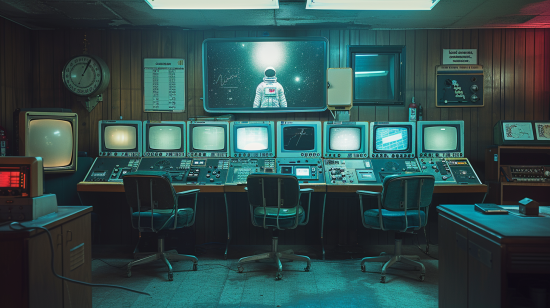Introduction
Before Yuri Gagarin’s historic flight, there were rumors of Soviet cosmonauts who perished in failed space missions. These “lost cosmonauts” are said to have been erased from official records, leaving their fates shrouded in mystery and speculation. This article explores the theories, evidence, and ongoing intrigue surrounding the missing cosmonauts.
The Early Days of Space Exploration
The space race between the United States and the Soviet Union was a pivotal period in the mid-20th century. The Soviet Union achieved several significant milestones, including launching the first artificial satellite, Sputnik, in 1957. These achievements were part of a broader effort to demonstrate technological and ideological superiority.
Yuri Gagarin’s Historic Flight
On April 12, 1961, Yuri Gagarin became the first human to journey into outer space and orbit the Earth. His successful mission, Vostok 1, marked a significant victory for the Soviet space program. Official Soviet narratives celebrated this achievement while maintaining strict control over information regarding space missions.
Rumors of Lost Cosmonauts
The theory of lost cosmonauts suggests that the Soviet Union attempted manned spaceflights before Gagarin’s successful mission, which ended in tragedy. These failed missions, according to the theory, were covered up by Soviet authorities to maintain the image of an infallible space program.
Alleged Early Space Missions
Several unconfirmed reports claim that there were manned space missions before Gagarin’s flight. These include stories of cosmonauts who allegedly died in orbital flights or re-entry failures. The details of these missions are vague and often rely on anecdotal evidence or second-hand accounts.
Key Figures and Whistleblowers
Various individuals have come forward with claims supporting the lost cosmonauts theory. These include Soviet insiders, defectors, and Western journalists who reported on suspicious activities and discrepancies in Soviet records. Some of the most notable sources include Italian brothers Achille and Giovanni Judica-Cordiglia, who claimed to have intercepted distress signals from dying cosmonauts.
Evidence Supporting the Theory
Supporters of the lost cosmonauts theory point to several pieces of evidence:
Intercepted Radio Transmissions: The Judica-Cordiglia brothers reported hearing radio communications from cosmonauts in distress, including heartbeats and dying gasps.
Discrepancies in Official Records: Inconsistencies in Soviet space mission logs and the sudden disappearance of cosmonaut trainees from official rosters have fueled speculation.
Counterarguments and Debunking
The Soviet government consistently denied the existence of lost cosmonauts. Official explanations attribute the rumors to Cold War propaganda and misinformation. Skeptics argue that the intercepted transmissions could have been misinterpreted or fabricated and that the supposed evidence lacks credibility.
The Fate of the Alleged Cosmonauts
Theories about the fate of the lost cosmonauts vary. Some believe they died in space due to equipment failure, while others think they perished during re-entry. The lack of concrete evidence makes it difficult to confirm any specific scenario.
Impact on the Soviet Space Program
The rumors of lost cosmonauts cast a shadow on the Soviet space program, raising questions about transparency and the true cost of their achievements. Despite these allegations, the Soviet Union continued to make significant advancements in space exploration.
Western Reaction and Media Coverage
Western media played a crucial role in popularizing the lost cosmonauts theory. Sensational stories and speculative reports captured the public’s imagination, contributing to the enduring mystery.
Technological and Scientific Context
The early days of space exploration were fraught with technical challenges and high risks. Both the Soviet and American space programs experienced numerous failures, underscoring the dangerous nature of space travel.
Modern Investigations and Findings
Recent research and the release of previously classified documents have provided new insights into early space missions. While some documents support the official Soviet narrative, others leave room for further investigation and speculation.
Cultural Impact
The mystery of the lost cosmonauts has influenced literature, film, and other media. It remains a compelling topic for writers and filmmakers, symbolizing the human cost of the space race and the quest for technological supremacy.
The Ongoing Mystery
Despite extensive research, the theory of the lost cosmonauts persists. The combination of anecdotal evidence, official secrecy, and the dramatic nature of space exploration continues to fuel curiosity and debate.
Conclusion
The mystery of the missing cosmonauts remains one of the most intriguing and controversial aspects of early space exploration. While concrete evidence is elusive, the theories and speculation surrounding these lost pioneers continue to captivate the imagination. As new information emerges, the search for definitive answers goes on.
FAQs
What are the lost cosmonauts?
The lost cosmonauts are rumored Soviet cosmonauts who allegedly died in failed space missions before Yuri Gagarin’s historic flight and were erased from official records.
What evidence supports the existence of lost cosmonauts?
Evidence includes intercepted radio transmissions, discrepancies in official records, and accounts from Soviet insiders and Western journalists.
Have any lost cosmonauts been identified?
No, despite various claims and investigations, no lost cosmonauts have been definitively identified.
How did the Soviet Union respond to these claims?
The Soviet Union consistently denied the existence of lost cosmonauts, attributing the rumors to Cold War propaganda and misinformation.
Why does the mystery of the lost cosmonauts persist?
The combination of anecdotal evidence, official secrecy, and the dramatic nature of space exploration keeps the mystery alive and fuels ongoing curiosity and debate.

